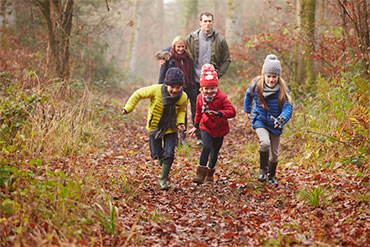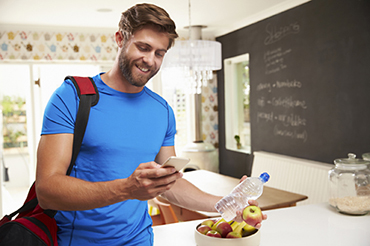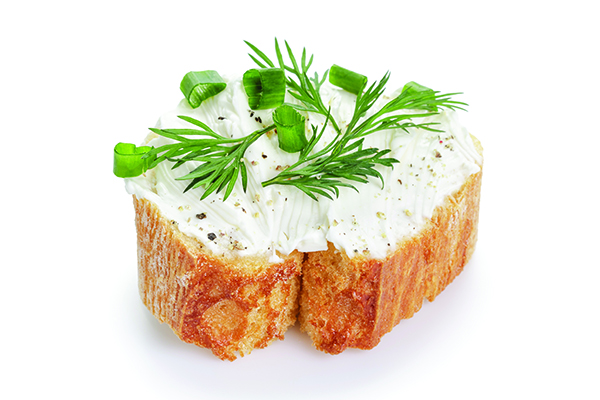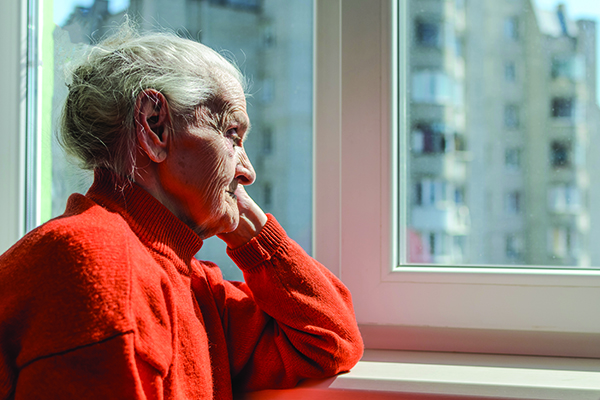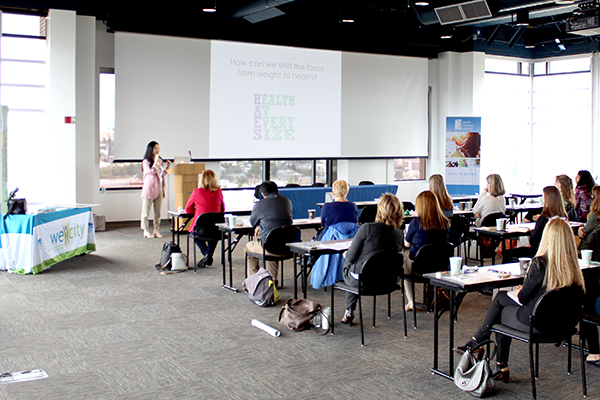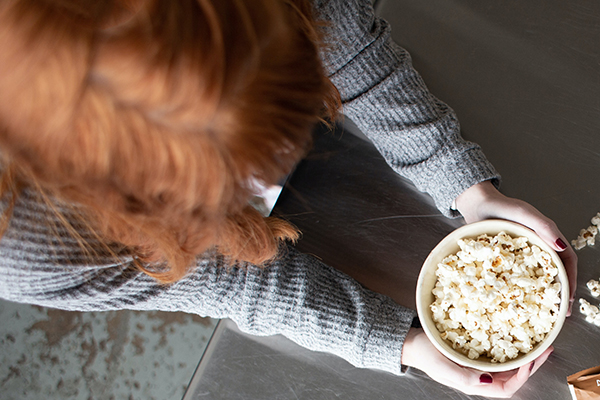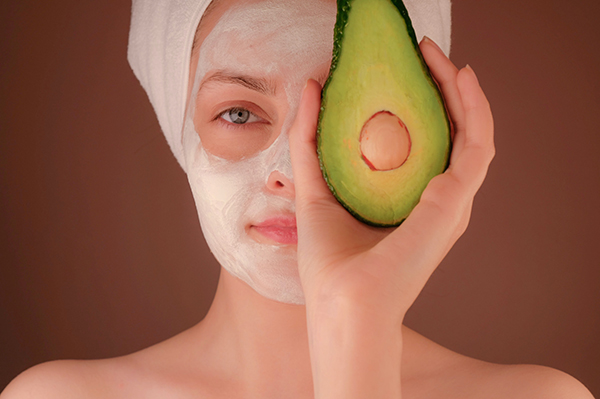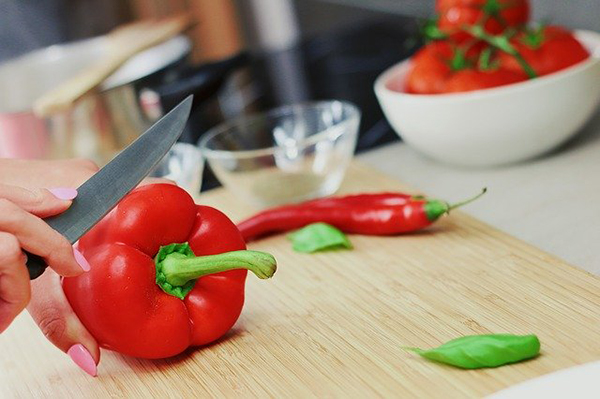Staying healthy during the dark days of winter
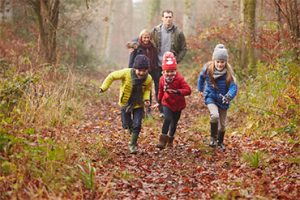
While the shortest day of the year may be behind us, there is still plenty of winter left for us in Seattle — this means short, cool and often gloomy days with little sunlight. Staying healthy during this time of year can feel like a challenge, but there are a few things you can do to keep healthy this winter.
The sun vitamin
As many of us know living in the Northwest, vitamin D is an important part of a healthy body. But this far north, we do not get enough vitamin D from sunlight alone. Our bodies naturally synthesize vitamin D when exposed to sunlight, and all you need for a week’s worth of vitamin D is 15 to 20 minutes in the direct sun with a significant amount of skin exposed. But during the winter months that can be difficult to come by.
Vitamin D helps the body absorb calcium, which supports the development and maintenance of healthy bones. Insufficient amounts of vitamin D, especially in children, can cause a condition called rickets, a softening of the bones. For older people, vitamin D and calcium are important in preventing osteoporosis, or brittle bones.
While we’ve known about the connection between vitamin D and calcium for some time, recent research has shown that vitamin D may also improve muscle recovery and help prevent soreness and aching. Research has also shown that vitamin D may help with immune function and may improve depression symptoms and help alleviate symptoms of Seasonal Affective Disorder (SAD).
You can get small amounts of vitamin D from foods such as fish, eggs and fortified milk, but for people living in the Seattle area, it is difficult to get enough vitamin D without taking a supplement. I recommend that my patients take a daily vitamin D supplement with 1,000 to 2,000 international units (IU) to ensure sufficient vitamin D levels.
The great outdoors
Another aspect of maintaining your health over the winter is to stay active. People often find it difficult to motivate themselves to exercise during the winter because of the weather. But staying active is an important part of maintaining your health and immune system and can help you fight off or recover from colds and other winter viruses faster.
If going to the gym by yourself is the last thing you want to do, find an exercise buddy or sign up for a class. The social aspect will help motivate you to keep your schedule, and people often find it more fun to exercise in pairs or groups. Along similar lines, there are lots of recreational sports leagues in Seattle playing everything from basketball to dodgeball to Ultimate Frisbee that will certainly keep you active.
Organized sports and classes are not the only way to stay fit though. Individual activities like biking, walking and running are still available in the winter months — just embrace the rain!
If you are willing to venture into the mountains, there are plenty of outdoor winter activities like snowshoeing, skiing, snowboarding and cross-country skiing that are fun and relatively close by.
It is important to find a physical activity that you enjoy doing because then you will be more motivated to do it.
Sick time
Finally, the winter months are synonymous with cold and flu season. While there is no surefire way to avoid getting a cold or the flu this winter, there are steps you can take to help you avoid getting sick.
If you haven’t gotten a flu shot already, it’s not too late. While this year’s flu shot might not be as effective as in previous years, it will still give you some protection and can help you recover more quickly should you get the flu.
Washing your hands with soap and water throughout the day will also help you avoid catching and spreading cold and flu viruses. If soap and water are not available, use an alcohol-based hand gel. While it may seem like a simple thing, it is one of the best ways to avoid getting sick.
At home, wipe down counters, tables, and toys with disinfectant on a regular basis.
If you do get sick, stay home from work or school to avoid spreading the virus. Wait until you are fever-free for at least 24 hours before returning to your normal activities.
The winter months in the Northwest can be cold and dreary. But getting adequate exercise, avoiding cold and flu viruses as much as possible and taking vitamin D supplements will help you on your way to maintaining your health over the winter.
Let us stand for each other
“Justice will not be served until those who are unaffected are as outraged as those who are.”
– Unknown“Not everything that is faced can be changed. But nothing can be changed until it is faced.”
– James Baldwin
Fellow Community Members,
We are facing challenging times right now as a society and we need to take a moment to stop and acknowledge the injustices that so many of our colleagues and community members face. Images of the murder of George Floyd have been a haunting reminder of deep-seated injustice that continues to plague our country. There are many underlying causes for this—implicit bias, systemic oppression, a lack of police accountability, gun laws that protect assailants over victims, and persistent anti-black attitudes. For resources on dealing with some of these ills, see below. As understandable frustration spills over on our streets, it can raise uneasy feelings and difficult questions for us: Where do we go from here? How do we support one another going forward?
One of the ways we display our compassion and support for our fellow community members is by speaking up and letting everyone know that the systemic racism that communities of color have experienced in our communities need to end. Although not popular, we need to speak up when we witness these injustices because that is the only way change will occur. We stand with the Floyd family. We stand with Ahmaud Arbery’s family after he was killed jogging in Brunswick, GA. We stand with Breonna Taylor who was killed at the hands of police in Louisville. We stand and expect accountability for the loss of these fellow community members.
At PacMed, we are a community of diverse caregivers committed to providing compassionate, high-quality care to the communities we serve. Part of fulfilling this commitment is supporting everyone, from all walks of life, when they enter our clinic network. We also have a duty to show concern for the misfortunes occurring all around us. Cities across the nation are crying out for change. We support those who are expressing their concerns in peaceful protest. We support better days for everyone. We stand for equality for all and we recognize the need for change in order for every member of our society to feel safe, supported and a sense of belonging.
As we move through these challenging days, know that we all have a voice and we can use it to work for positive change and support those who are unsupported. Now is also a great time to get involved in local government and to find ways to positively influence change so that everyone receives the support they deserve. And let us stand up to individual acts of injustice when we see them in our daily lives, so our neighbors know we have their backs as we together reclaim the space for love, justice, and belonging for all.
Let’s continue to unite and support one another.
Sincerely,
The PacMed Executive Team
PacMed is currently discussing what additional actions we will take to further the work we have done to oppose systemic racism. For now, if you would like to take further action, here are some resources for racial justice and community support:
- NAACP Legal Defense Fund supports racial justice through advocacy, litigation, and education.
- Campaign Zero is a police reform group that has been working on policy solutions informed by data and human rights principles.
TAKE ANTI -RACIST ACTION:
- Learn: blacklivesmatter.com
The official website of the movement that launched the modern fight for freedom, liberation and justice, locally and globally. - Act: kingcountyequitynow.com
Hear from local partners united in a platform to halt predatory development, foster community building and more. - Listen: rainieravenueradio.world
A local, online 24/7 radio station showcasing the diverse voices of South Seattle and those disenfranchised by our rapidly gentrifying region. - Read: southseattleemerald.com
Our homegrown, grassroots online news publication weaving anf equity analysis and perspective into coverage of local issues and beyond. - Bank: blackoutcoalition.org
A compilation on the Bank Black and Buy Black movements, including introductory materials and a map of resources. - Spend: intentionalist.com
Bring consciousness to consumerism by connecting with and supporting the people behind local, small businesses. - Invest: communitypassageways.org
Learn about and support this organization creating alternatives to incarceration for youth and rebuilding communities. - Relate: aapf.org/sayhername
Hear the stories of Black women and girls victimized by racist police violence, and find out what you can do to help. - Connect: bcia-intl.org
Ensure taxpayer-funded organizations are held accountable to goals of bettering the lives of Black families. - Immerse: pinwseattle.org
Grow your understanding of institutional racism through workshops and organizing aligned with others doing similar work in our region and across the U.S.
Making Goals, Keeping Track
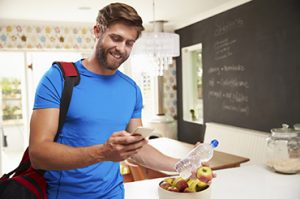
Fitness trackers are flooding the markets these days. Some are devices you wear, others are websites. Here’s a small sampling:
- UP, FuelBand and Fitbit—wristbands that sense motion to track both steps and times of no motion to calculate stairs climbed, calories burned, sleep quality and other data
- MyFitnessPal—an app and website for tracking exercise and diet
- EveryMove—a social platform where you enter data from your own fitness devices and receive encouragement and ideas from an online community
With various devices, apps and websites, you can calculate calories burned, measure vital signs, count your steps and even track your sleep habits. You may already have an app: Apple’s Health app is automatically loaded onto iPhones—it may be counting your steps right now!
Pros and Cons
The best part of trackers is that they can aid you in reaching your goals by giving you direct feedback that helps you keep track of your fitness activities. A 2012 study at Fred Hutchinson Cancer Research Center found that people who kept a food journal lost about 6 pounds more than those who didn’t.
An additional motivator embedded in many of these devices, websites or apps is a social context. Your progress can be compared to others discreetly, which helps some people maintain their commitment and push their fitness activities to the next level.
On the down side, most tracking devices and apps aren’t perfectly accurate or don’t work very well for certain activities (for example, cycling or weight training). Just like cardio machines at your typical gym—the elliptical, treadmill, rowing machine and so forth—tracking devices generally provide just a good estimate of your activities. This estimate gives you a comparison point of your progress, which can help you stay active, and that’s a good outcome!
Keeping It Simple
I feel that trackers can be helpful—but they don’t need to be complicated, high tech or expensive. A simple pencil and paper can do the trick. The overall idea is to reinforce your fitness efforts by helping you see your progress, which can help sustain your activities by keeping you accountable.
For fitness goals, whether using a tracking device, app, or pen and paper, use the following guidelines:
- Make a specific fitness goal and record your starting point. Per the American Heart Association, the minimum fitness goal for adults is at least 30 minutes of moderate intensity exercise five days per week. (Moderate intensity means walking and being able to speak in three- to four-word sentences before having to take a breath.)
- Start out easy and slowly increase your exercise gradually. Any exercise is better than none.
- Document each workout: your activity and total minutes. Exercise duration can be broken up into three 10-minute intervals throughout the day.
- Pick activities that you consider fun and change them frequently to prevent boredom.
- Be sure to also add some strength training to your regimen to help improve your bone health and fitness.
Creating a varied regimen and tracking your progress can be a huge motivator! You’ll be able to see how you’re doing. Studies have shown that being fit may help extend your life a little, but more importantly, it can improve the quality of your overall life.
Spread the news
From frontline to quarantine
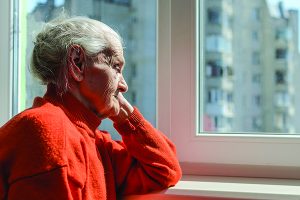
It is June 12, 2020. Seattle has entered “Modified Phase 1” during the COVID-19 pandemic. Restaurants are reopening with social distancing, and hair stylists are open for appointments with appropriate screening and masks. It all seems like another planet as I enter the nursing home in Queen Anne to see a new patient. Signs posted on the entry door to the COVID wing direct all incoming providers to observe “Droplet Precautions” with masks, eye protection, gowns and gloves prior to entry. Visitors are allowed to see a resident only at the “end of life.”
The facility is even quieter than usual, and I notice a gathering of all staff in the dining room, just concluding a meeting. There are many staff members I know, and I see some with tears in their eyes as they are coming into the hall. As everyone lines up prior to entry to the COVID wing, they help each other tie their gowns from behind. I mention that this is a “very hard time to work in nursing homes.” One assistant turns to me saying, “I wish that it would all just be over.” Only later do I learn that their meeting was to announce the pending withdrawal of life support for a colleague who has been hospitalized with COVID-19 and on a ventilator.
I could not have imagined this change in the world of nursing homes four months ago. I have worked in nursing homes in the Seattle area for 26 years doing skilled nursing care, palliative care and long-term custodial care. This has always been an environment structured to provide care in a social and family-oriented environment. Facilities have recognized holidays and birthdays with parties. Volunteers come to play music for residents, and pets are brought in to provide love and nurturing. Now families can only come to the window and hold up signs or talk on cell phones to their loved ones.
My entry into this new and strange world was abrupt. I remember vividly my visit on February 26 to the Life Care Center in Kirkland. I first noticed concern on the faces of nurses coming down the hall, reporting fevers on several patients. Influenza tests came back negative. When I got back to my office, I commented to my colleagues that it was very strange to see the cluster of fevers without influenza in the nursing home. Two days later, the patients who had been admitted at Evergreen Hospital tested positive for COVID-19, representing the first-identified outbreak of the pandemic in the United States. Forty-three residents of Life Care died within the next month.
I entered quarantine at home beyond the 14 days required following my visit to the Life Care Center in February. I remained well throughout my quarantine and felt increasingly restless just waiting for the time to pass. I gave up a planned evening of live salsa dancing to which I had purchased tickets. I went on walks and bike rides alone and managed a solo cross-country ski outing on empty trails in the Cascades. It seemed odd and difficult to remain away from family members while I felt fairly confident that the precautions I was taking would protect me from becoming ill. Yet, I also sensed the reluctance of close acquaintances to violate the quarantine. It was indeed a time of being alone.
As I enter the final years of my medical career, writing about my experiences caring for patients has become an increasingly important way to articulate my feelings of loss. Isolation in quarantine represented a reversal in my role; now I was the one being shunned for fear of exposure to illness and contagion.
Seeing things from others’ perspective is an underdeveloped skill in our culture. COVID-19 is bringing my colleagues and me to a new depth of feeling and understanding of the social isolation and loss that patients and their families experience regularly. In a similar way, many across our nation are soul-searching around our collective neglect of the injustices suffered by people of color throughout history, in response to the taken lives of George Floyd and others.
Events of this year have broken us open to see realities we’ve always lived close to, but never dared touch. As we come through this time, my hope is that our newfound openness to the pain of others can help us remain more compassionate and fair to those we love, serve and walk alongside in this world.
LWA: Annual Symposium
LWA Spotlight
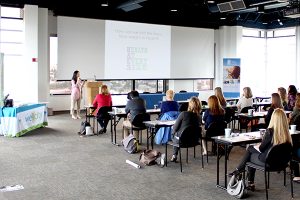 Save the date for 2020 LWA Food & Mood Symposium! The Living Well Alliance team is gearing up for our 2020 workplace wellness symposium! Mark your calendars for our event on October 22 at Pacific Tower on Seattle’s Beacon Hill. We will focus on mental health in the workplace this year. You can learn about past events at the LWA Wellness Symposium page.
Save the date for 2020 LWA Food & Mood Symposium! The Living Well Alliance team is gearing up for our 2020 workplace wellness symposium! Mark your calendars for our event on October 22 at Pacific Tower on Seattle’s Beacon Hill. We will focus on mental health in the workplace this year. You can learn about past events at the LWA Wellness Symposium page.
See what LWA is up to this spring. To accommodate social distancing, LWA is hosting virtual wellness programs for your company. Check out our LWA website for more on webinar topics and virtual yoga classes, including a new class on mindfulness and health.
The Living Well Alliance is run by Pacific Medical Centers. Call us today at 206.621.4419 for more information or email LivingWellAlliance@pacmed.org.
PacMed and Living Well Alliance are trademarks of Pacific Medical Centers.
Nutrition: Why we eat when we’re bored (and what to do about it)
Experiencing boredom is nothing new. However, with stay-at-home orders and socializing frowned upon, we may recently have been feeling more bored than ever! At these times, it’s tempting to turn to our tried and true method for easing boredom: food.
But how did this happen? How did our brains decide that the best way to relieve boredom is to eat?
One reason is dopamine.
Dopamine is a neurotransmitter in our brain that’s strongly tied with feelings of reward and pleasure. When we’re bored, our brains aren’t stimulated, and this causes our dopamine levels to drop. This triggers us to take an action that will bring it back up, such as eating.
Of course, there are other ways to spike dopamine levels—drugs, cigarettes and sex, to name a few—but for a lot of us, food does the trick just fine!
But that’s not all.
Yes dopamine plays a role, but there’s more that goes into our perpetual need for chips when we’re feeling uninspired.
When we experience boredom, we feel the need to participate in behaviors that result in pleasure. However, if we consistently turn to a particular behavior, our brain becomes less able to experience pleasure from other activities.
That means if we frequently rely on food to relieve boredom, our brain becomes rewired to derive the most pleasure from food.
Eventually our brain will crave eating over other activities because that’s how it experiences the most pleasure
However, there are three (obvious) problems with this approach to handling boredom:
- Most of the time, we don’t actually need food. So not only do we mess with our appetite for the next meal, we also end up getting extra calories that our body doesn’t need.
- Those extra calories are also generally empty calories; when bored, we rarely (if ever) choose to eat nutrient-dense foods like fruits, vegetables, lean proteins and healthy fats.
- We rarely feel satisfied when we’re done eating. Instead we’re more likely to experience guilt or frustration with our “lack of willpower.”
Fortunately, we’re not stuck with this habit for life. There are a few things we can do to help break ourselves out of the boredom-food cycle:
1| Notice when you’re eating due to boredom.
Sounds easy enough, right? Become familiar with the times and/or situations you’re most likely to experience boredom, then notice if and when you turn to food for relief. Do you feel bored more often during the day or late at night? While you’re working or while watching TV after dinner? Keep a journal to help with identifying your patterns and trends.
2| Brainstorm other ways to address boredom.
Come up with a list of all the activities you enjoy. Consider hobbies, creative outlets, intellectual pursuits and other activities that get your brain or body engaged. Decide which one(s) you want to try the next time you’re feeling bored.
If your list of activities is looking a little sparse, it may be time to try something new—or return to a soothing hobby from your past. Learn how to knit or take up painting. Sign up for music lessons or become a dog walker. Ask your friends what they like to do and try it out for yourself.
If you still find yourself wanting to eat, even with an arsenal of new activities, have no fear! Remember that the more you use an activity, the more it becomes connected to your brain’s pleasure center. So the more you do it, the more enjoyable it will become.
3| Embrace boredom.
There’s no better time to try this! Instead of reaching for food—or your phone, or a cigarette, or whatever—lean into the feeling of boredom, let your mind wander and be curious. Not only does this give your brain the freedom to think outside the box, it also disrupts the neurological connection between food and pleasure.
A study published in the journal “Academy of Management Discoveries” found that experiencing boredom can actually increase creativity. In the study, one group of participants performed boring tasks, such as copying numbers from an old phone book, while the control group didn’t. Both were then asked to complete creativity tests, such as coming up with uses for a pair of cups.
The study found that those who completed the boring tasks came up with more ideas than those in the control group. It also found that the first group’s ideas were often more creative.
So don’t try to fight off boredom. Ultimately, the more comfortable we are with being bored, the less likely we’ll need food (or anything else) to distract us from it.
Healthy eating!
Recipe: Calming Face Mask for Dry Skin
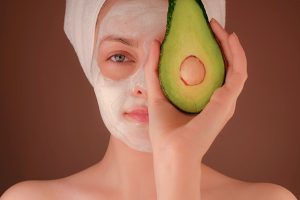 Here’s a different kind of mask from the ones we are all hearing about and seeing these days! This facial treatment hydrates dry skin … and forces you to take time for yourself.
Here’s a different kind of mask from the ones we are all hearing about and seeing these days! This facial treatment hydrates dry skin … and forces you to take time for yourself.
Add hydration back to rough, dry skin with this moisturizing mask. “The omega fatty acids in avocado and olive oil help seal cracks between skin cells,” says Joshua Zeichner, director of cosmetic and clinical research at Mount Sinai Hospital in New York City. Thanks to soothing ingredients like honey and yogurt, your skin will feel incredibly soft and plump—if a little sticky. Just be sure to rinse well around the hairline.
Recipe: Comforting vegetarian chili
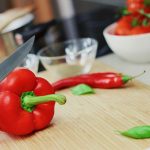 Chili is an excellent “comfort food” that is full of fiber and easy to make. It also delivers an inner warmth while we wait for summer to fully hit the Pacific Northwest. An extra bonus—chili provides about 10% of your daily calcium needs for strengthening the bones. Top with plain yogurt or shredded cheese for an additional dose of calcium.
Chili is an excellent “comfort food” that is full of fiber and easy to make. It also delivers an inner warmth while we wait for summer to fully hit the Pacific Northwest. An extra bonus—chili provides about 10% of your daily calcium needs for strengthening the bones. Top with plain yogurt or shredded cheese for an additional dose of calcium.
Have extra avocado and yogurt? Relax after dinner with the hydrating face mask, recipe below!
Outdoor exercise during COVID-19
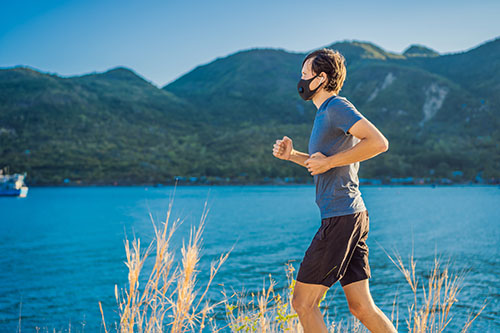 Are you confused about getting outside for exercise during this trying time of COVID-19? If so, you’re not alone. Like so much about the current situation, the advice about exercise right now can be confusing.
Are you confused about getting outside for exercise during this trying time of COVID-19? If so, you’re not alone. Like so much about the current situation, the advice about exercise right now can be confusing.
As a sports medicine specialist, I like to think physical activity is an elixir for better health and should be prescribed to most everyone. It’s one of the most effective treatments for multiple health issues (like cardiovascular disease, hypertension, depression, obesity, diabetes and others), and even moderate exercise has been shown to boost the immune system. Exercise is a medical prescription everyone should follow. However, the long-term benefits of exercise need to be pursued while also being smart about the serious risks of exposure to the virus.
As part of our state’s Stay Home, Stay Healthy order, many businesses including gyms are closed. Therefore, exercise needs to be done at home or outside. Yet, many options are unavailable—like parks, beaches and hiking trails that are closed to facilitate social distancing. In addition, the WHO and CDC are now recommending universal wearing of masks when leaving your home, but a mask can make exercise more difficult. All of this information can be hard to sort through.
So how do we exercise—while exercising caution—during the current public health crisis?
Is it safe to exercise outside?
Let’s start with what we know. We know that the virus that causes COVID-19 is spread through droplets released by infected people, such as when they sneeze or cough—and possibly even when talking or breathing. We know these droplets can hang in the air, especially in enclosed spaces. We also know people breathe more deeply during aerobic exercise. A person who is infected may have no symptoms and not know they are contagious. For these reasons, it is of the utmost importance to keep your distance from people you don’t live with—both to protect yourself and to help flatten the curve.
There is also much we do not know yet—but we can apply some common sense. When virus-carrying droplets occur outdoors, it is reasonable to think the concentration will be lower due to the open space. It is possible this would make the “viral dose” you might be exposed to less dangerous. You can lower your risk outdoors even more by maintaining a social distance of greater than 6 feet. One white paper (not yet peer reviewed) recommends staying out of the direct path or lane of people exercising 30-60 feet away, to avoid catching particles in their slipstream.
If you are running, walking or cycling, there is a risk of moving through a coronavirus droplet cloud—however, my assessment is this risk is small overall, so long as you follow the social distancing rules and avoid crowded areas. My recommendation for safety is to maintain a distance greater than 6 feet if you or others are running or cycling outdoors.
Do you need to wear a mask when exercising outside?
If you can use a mask when exercising outdoors, it too would help minimize your overall risk. However, I don’t believe it is absolutely necessary, and it may be difficult to do when exercising heavily. The CDC has information on wearing a cloth mask to slow the spread of COVID-19.
Remember, a cloth or paper mask plays the same role as covering your cough or sneeze: it protects those around you. And since any one of us may be infected with the coronavirus and not have symptoms, wearing a mask when exercising near others can help slow the spread of this disease.
Key takeaways. The risks of exercising outside can be minimized if you follow some guidelines:
- Avoid crowded areas.
- Head outside during slower times. Depending on your area, these may be early morning, during the day when others may be inside working, or in the dinner hour or evening.
- Cover your mouth and nose with a light mask, if feasible, while you exercise.
- For vigorous workouts, try cooler hours, when a mask might be more comfortable (or perhaps unnecessary, if fewer people are out).
- Keep your distance from others. Aim for more than 6 feet if you are walking, running, climbing stairs or cycling, or around others who are pursuing such activities.
- Avoid touching your face during your workout.
- When you return home, take off your gear/clothes and wash your hands thoroughly before touching your face.
- Avoid touching household items (knobs, counters, fridge door, etc.) until you have cleaned your hands.
- If you wear a cloth mask, clean it in a washing machine regularly.
There is risk in life and everyone needs to decide how much they are willing to accept. I think exercise is an important part of life, and while exercising outside has risks, these can be minimized.
I wish you the best in finding ways to maintain your health through exercise, while also taking precautions that make sense.
Chris Maeda, MD, practices sports medicine at Pacific Medical Centers. He sees patients at the PacMed clinics in Beacon Hill, Northgate, Canyon Park (Bothell) and Totem Lake. To schedule an appointment with Dr. Maeda, please call 1.888.472.2633.
Let us know if these tips helped you at StayHealthy@pacmed.org. Read more about PacMed’s response to COVID-19.



